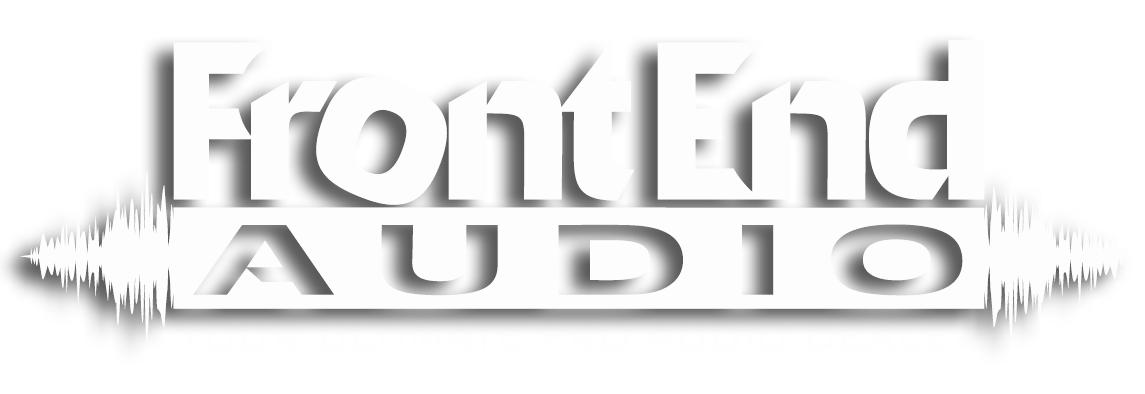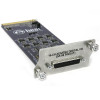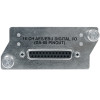The Hear Technologies AES Card is a 16-channel AES/EBU I/O Card for Hear Back PRO Hub. It allows the Hear Back PRO Hub to communicate with pro audio equipment using multi-channel AES/EBU protocol.
The Hear Technologies AES Card connects 16 channels of audio using a Tascam DA-88 style pinout on a DB25 connector. This is the same pinout that standard analog DA-88 style connections use. There is one difference: Most manufacturers use the first 4 balanced pairs (the first 8 channels) for inputs and the last 4 balanced pairs (the last 8 channels) for outputs. Due to the amount of space available on the back of Hear Technologies AES Card, they use just one DB25 connector to input (or output) all 16 channels. If you are interfacing with AES/EBU on another piece of equipment that uses a DB25 type connector, you will want to use that manufacturer’s break-out cable, which splits out to individual XLR connectors first, then patch each of those XLR connectors to their cable. Using a DB25 to DB25 cable will not work (if you try it, you will likely get only 8 channels).
Input and Output Settings
The Hear Technologies AES/EBU Card can either input 16 channels of balanced AES/EBU audio or it can output 16 channels of balanced AES/EBU audio depending on where the four jumpers – J4, J5, J6, and J7 – are set. These jumpers are located on the card, and they are set by default as inputs at the factory.
Input
When the Hear Technologies AES Card is used as an input, the first pair of channels (1/2) serve as the clock source for the system and must be connected to a valid AES/EBU source in order for the rest of the inputs to work. All inputs MUST run at the same sampling rate and MUST have their word-clocks synchronized to avoid digital pops and clicks. The Hear Technologies AES Card will automatically change sampling rate to lock on to the incoming signal.
Output
When the Hear Technologies AES Card is used as an output, the AES card will automatically change sampling rates to follow the sampling rate of the input source. Supported sampling rates are 44.1kHz, 48kHz, 88.2kHz, 96kHz, 176.4kHz, and 192kHz.
Cabling
Standard microphone cable is not recommended for transmission of the AES/EBU signal. Digital-grade 110? AES/EBU cable such as West Penn DA2401 is recommended. The maximum distance you can run AES/EBU on a good quality digital-grade 110? cable is a function of the maximum sampling rate that you wish you support.
Hear Technologies AES Card Features
- Tascam DA-88-style pin-out on a DB25 connector for inputting or outputting 16 channels of digital audio
- Jumper settings allow the user to choose whether the card is 16 inputs or 16 outputs
- Supports and automatically locks onto sampling rates of 44.1 kHz, 48 kHz, 88.2 kHz, 96 kHz, 176.4 kHz, and 192 kHz
- DB25 to eight XLR (each AES/EBU XLR connector supports 2 channels of digital audio) break-out cable
- 2 cards can be used per Hub to allow A/B input switching between two banks of 16 channels
- Up to 4 cards can be used to allow A/B input switching as well as dedicated AES/EBU outputs
Hear Technologies AES Card Specifications
- Number of Inputs: 16
- Input Connectors: AES/EBU DB25
- Number of Outputs: 16
- Output Connectors: AES/EBU DB25
- Digital Format: AES/EBU
Hear Technologies AES Card Includes
- Hear Technologies AES Card
- Manufacturer Warranty
No review yet, Be first to Write a Review
Write a Review














 Sign Up for exclusive sales and offers!
Sign Up for exclusive sales and offers!